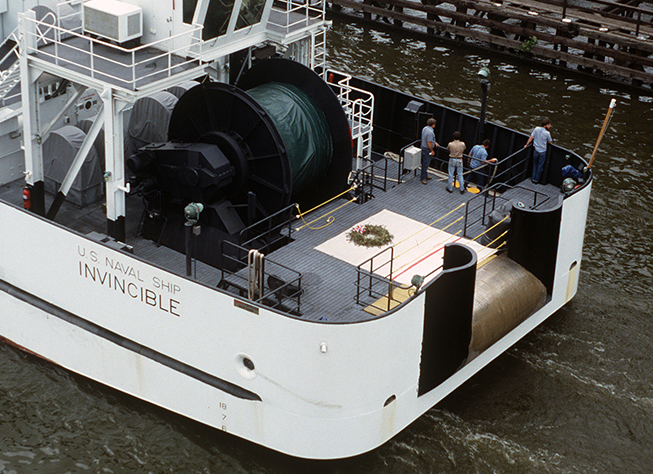With the blue water threat of free-ranging, nuclear-armed Soviet submarines coming to a head in 1971, the Department of Defense (DoD) assigned DARPA a singular mission: Revamp the U.S. military’s anti-submarine warfare (ASW) capabilities to track enemy subs under the open ocean where the U.S. Navy’s existing Sound Surveillance System (SOSUS) was falling short. At the time, the U.S. Navy was already working on what would become its Surveillance Towed Array Sensor System, or SURTASS, through which surface ships towed long, mobile arrays of sensors to listen for submarine activity. Telemetry and data-handling issues greatly limited the system’s capabilities.
That’s when DARPA committed funds for the LAMBDA program to modify oil-industry-designed seismic towed arrays so they could detect submarine movement. DARPA-funded scientists began experiments at submarine depths, and soon generated spectacular results. In 1981, the DoD gave quick approval for production of a LAMBDA-enhanced SURTASS array, without requiring further study, a highly unusual decision for a program that had experienced a major technology shift late in the game. The system—which with DARPA participation would become enhanced by way of leading-edge computational tools, satellite-based data linkages, and computer networking—would become the Navy’s go-to method for tracking mobile Soviet subs for the remainder of the Cold War. By 1985, Secretary of the Navy John Lehman was so confident in his force’s ability to keep tabs on elusive Soviet boomers (a nickname for ballistic missile submarines), he declared that in the event the Cold War turned hot, he would attack Soviet subs “in the first five minutes of the war.”
